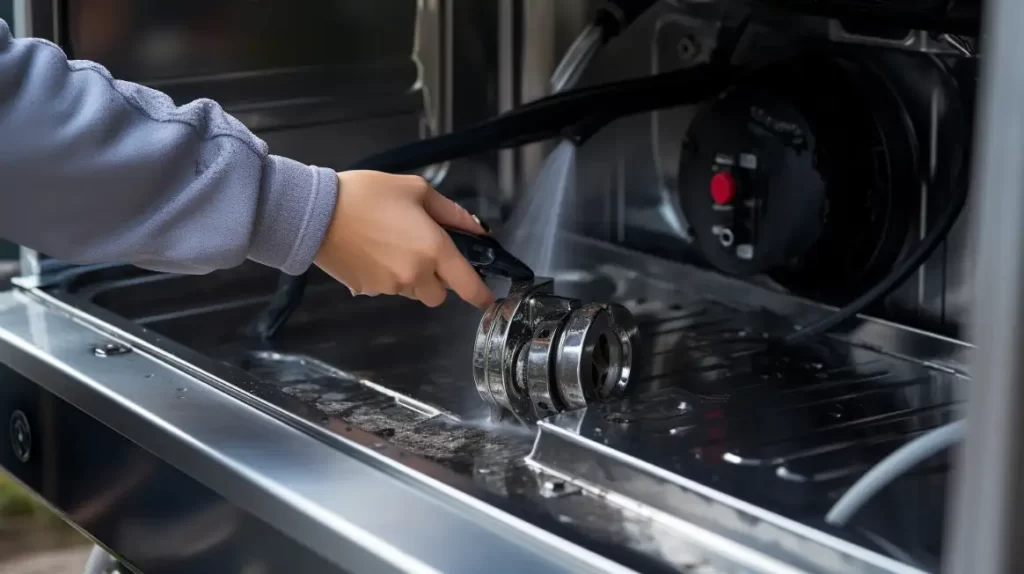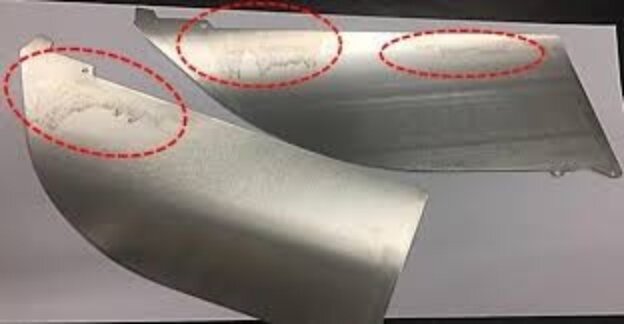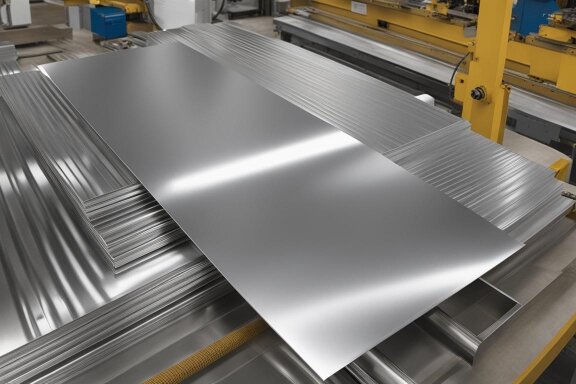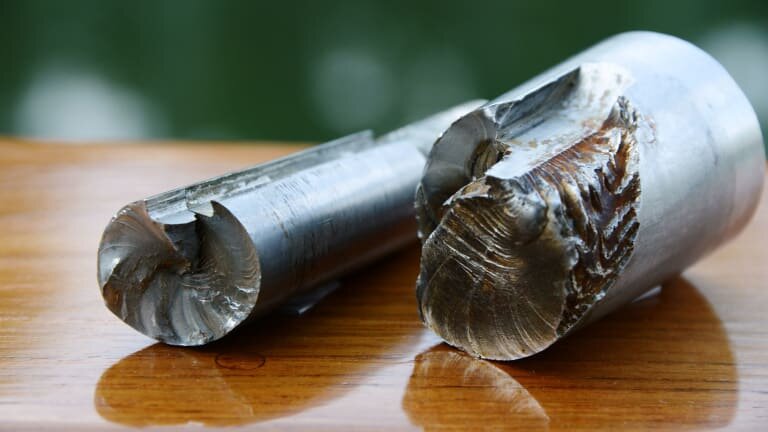Stainless steel is corrosion-resistant, but it’s not invincible. Contaminants from machining and handling can leave it vulnerable to rust. Passivation might be the solution if your stainless steel parts show signs of discoloration or corrosion. This process enhances corrosion resistance and extends the lifespan of your components, making it a crucial step in ensuring long-term performance.
Skipping passivation can lead to premature corrosion, especially in harsh environments. If your stainless steel components must withstand moisture, chemicals, or extreme conditions, passivation helps maintain their integrity and performance.
What Is Stainless Steel Passivation?
Stainless steel passivation is a chemical treatment designed to remove free iron and other contaminants from the surface. This process restores the steel’s natural oxide layer, which enhances its corrosion resistance.
Typically, the treatment involves immersing the steel in an acid solution, such as nitric or citric acid, followed by rinsing and drying to ensure a clean and durable surface.
Why Does Stainless Steel Need Passivation?
Despite its name, stainless steel isn’t completely stain-proof. During fabrication, machining, and welding, contaminants like iron particles can be embedded in the surface, creating weak points that lead to rust.
Passivation eliminates free iron and contaminants from the surface, preventing rust formation. It also reinforces the natural chromium oxide layer, a barrier against oxidation and chemical damage.
Principles of Stainless Steel Passivation
Passivation enhances stainless steel’s corrosion resistance by removing impurities and promoting a stable oxide layer. The process depends on chemical interactions and environmental factors that determine its effectiveness.
Chemical Reactions Behind the Process
In a typical passivation process, the stainless steel is treated with an acidic solution, such as nitric acid. The acid reacts with free iron particles on the surface, dissolving them and promoting the formation of a chromium-rich oxide layer. This new oxide layer is what makes the stainless steel resistant to corrosion.
Factors That Influence Passivation Effectiveness
Several factors affect passivation results:
- Stainless Steel Grade: Higher chromium and nickel content improve passivation outcomes.
- Acid Type and Concentration: The strength and type of acid used (nitric or citric) influence how well the surface is cleaned.
- Temperature: Higher temperatures can accelerate the reaction but must be controlled to avoid damaging the material.
- Processing Time: The duration of the acid bath must be sufficient to dissolve contaminants without overexposing the surface.

Methods of Passivation
Two main methods for passivating stainless steel are nitric acid passivation and citric acid passivation. Both processes improve corrosion resistance but differ in their chemical properties and applications.
Nitric Acid Passivation
In nitric acid passivation, stainless steel is immersed in a concentrated nitric acid solution. The acid reacts with the surface to remove iron contaminants while promoting the formation of a chromium oxide layer. This method is highly effective but requires careful handling due to the hazardous fumes produced.
Citric Acid Passivation
Citric acid passivation is a more environmentally friendly alternative. It uses a citric acid solution to remove surface contaminants and promote the formation of the oxide layer. This method is safer, easier to handle, and equally effective for many stainless steel grades.
Comparing Nitric Acid vs. Citric Acid
- Effectiveness: Both methods effectively enhance corrosion resistance, but nitric acid is more aggressive in removing free iron.
- Environmental Impact: Citric acid is more eco-friendly and safer to handle, while nitric acid can produce harmful fumes.
- Cost and Handling: Nitric acid tends to be more expensive and requires specialized safety equipment. Citric acid is a more cost-effective and safer option.
- Applications: Nitric acid is better for heavy-duty passivation, while citric acid is suitable for lighter-duty applications where environmental concerns are a priority.
Benefits of Stainless Steel Passivation
Passivating stainless steel provides several key advantages that help maintain the material’s performance and appearance over time.
Enhanced Corrosion Resistance
Passivation removes contaminants like free iron from the surface, which can lead to rust and corrosion. Passivation helps stainless steel resist rust and oxidation by promoting the formation of a protective oxide layer.
Increased Durability and Lifespan
The protective oxide layer formed during passivation prevents corrosion and reduces the risk of pitting, cracking, or surface degradation.
Improved Aesthetic Finish
Passivation also improves the surface finish of stainless steel, removing discoloration and enhancing the material’s natural shine.
Step-by-Step Guide to Passivating Stainless Steel
Passivating stainless steel involves several key steps to ensure the process is effective. Below are step-by-step instructions for passivation:
Step 1: Cleaning
Before passivation, it’s essential to thoroughly clean the stainless steel to remove oils, grease, dirt, and machining residues.
Step 2: Choosing the Right Passivation Method
Factors to Consider
When selecting between nitric acid and citric acid passivation, consider the following:
- Type of Stainless Steel: Higher-grade alloys may respond better to one method.
- Environmental Impact: Citric acid is safer and more eco-friendly, while nitric acid requires more safety precautions due to harmful fumes.
- Desired Outcome: Nitric acid is ideal for heavy-duty corrosion resistance, while citric acid is suitable for lighter-duty needs.
Step 3: Executing the Passivation Process
Proper Handling of Chemicals
Handle acids using appropriate personal protective equipment (PPE), such as gloves, goggles, and respiratory protection. Ensure the acid is stored and disposed of according to safety guidelines to minimize health and environmental risks.
Temperature and Immersion Time Considerations
The effectiveness of passivation depends on the solution’s temperature and the immersion time:
- Temperature: For nitric acid, temperatures between 120-140°F (49-60°C) are optimal. Citric acid works well at room temperature but may benefit from mild heating.
- Immersion Time: Typically, parts should be immersed for 20-30 minutes to allow sufficient time for the chemical reactions to occur. Longer times may increase the risk of surface etching or damage.
Step 4: Post-Passivation Procedures
Rinsing and Neutralization
After the acid treatment, parts should be thoroughly rinsed with deionized water to remove any remaining acid. For nitric acid passivation, a neutralization step with a mild alkaline solution may be necessary to remove all acid residues.
Drying and Inspection
Once rinsed, the parts should be dried thoroughly to prevent water spots and further contamination. After drying, carefully inspect the surface for any defects, discoloration, or areas needing additional treatment.

Maintaining Passivated Stainless Steel
Routine maintenance is crucial to ensure that passivated stainless steel continues to perform at its best. Proper care will keep it corrosion-resistant and visually appealing over time.
Routine Cleaning and Care
Even when passivated, stainless steel still needs regular cleaning to maintain its surface. Use non-abrasive cleaners and soft cloths to avoid scratching the surface. For routine cleaning, mild detergents or pH-neutral cleaners are ideal.
Avoiding Recontamination
Avoid exposing passivated stainless steel to substances like oils, dust, or iron particles during handling and storage. When handling parts, ensure they are clean and use gloves to prevent transferring oils or moisture from your hands.
When to Re-Passivate
Over time, the passivation layer can degrade, especially in harsh environments or if the surface has been exposed to physical wear. If signs of corrosion or staining appear, it’s time to re-passivate. Additionally, re-passivation may be necessary after repairs or welding to restore the protective layer.
Conclusion
Passivating stainless steel is essential to enhance its corrosion resistance, durability, and aesthetic appeal. Following proper procedures, choosing the correct passivation method, and maintaining the treated surface ensures the material performs optimally, even in harsh conditions.
Ready to enhance the longevity and performance of your stainless steel products? Contact us today to learn more about our passivation services and how we can help you achieve the best results for your projects!
FAQs
How often should stainless steel be passivated?
Stainless steel should be passivated when it is first fabricated or after any welding or machining that may introduce contaminants. Regular passivation is not required unless the surface shows corrosion or damage.
How do you remove passivation from stainless steel?
The stainless steel can be cleaned using a strong acidic solution or abrasive methods to remove passivation. Nitric acid or a mechanical abrasion process can break down the oxide layer.
How do you tell if stainless steel has been passivated?
A visual inspection can reveal signs of passivation, such as a smooth, shiny, and uniform surface. You can also perform a corrosion test, such as exposing the steel to a mild acid solution, to check if the passivation layer is intact and effective.
What happens if stainless steel is not passivated?
If stainless steel is not passivated, it can be more vulnerable to corrosion, especially in harsh environments. Iron particles left on the surface can cause rusting and degradation over time, leading to pitting, staining, or even structural damage.
Hey, I'm Kevin Lee

For the past 10 years, I’ve been immersed in various forms of sheet metal fabrication, sharing cool insights here from my experiences across diverse workshops.
Get in touch

Kevin Lee
I have over ten years of professional experience in sheet metal fabrication, specializing in laser cutting, bending, welding, and surface treatment techniques. As the Technical Director at Shengen, I am committed to solving complex manufacturing challenges and driving innovation and quality in each project.




